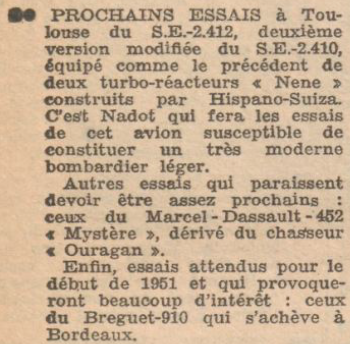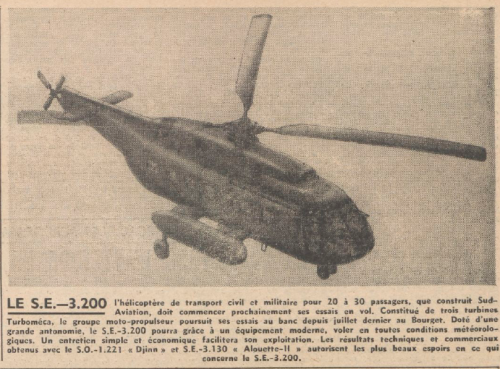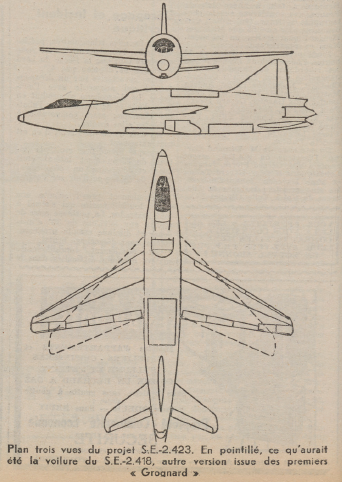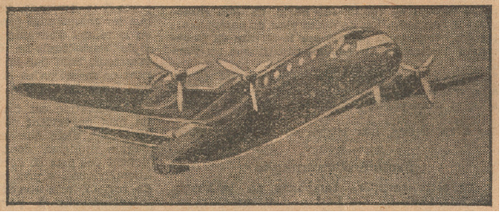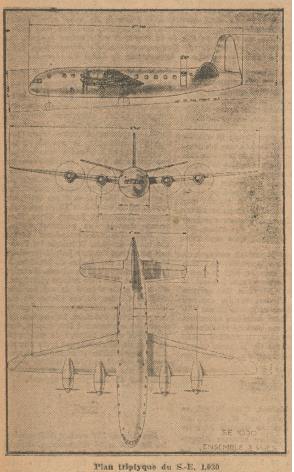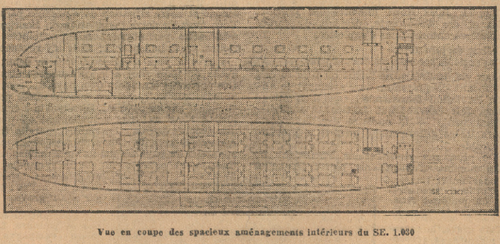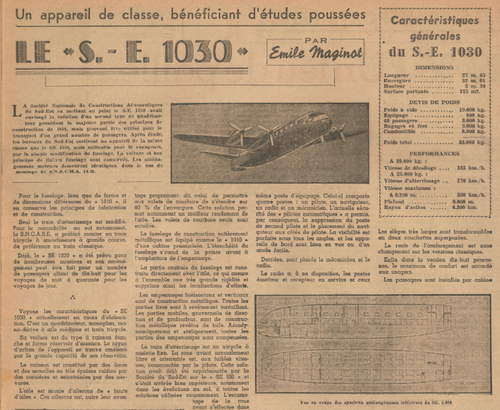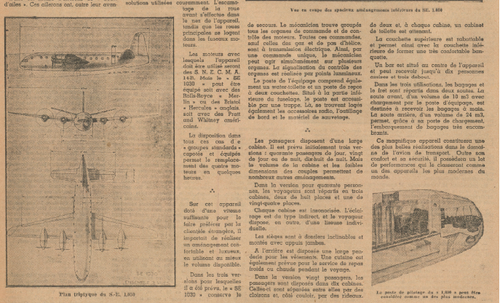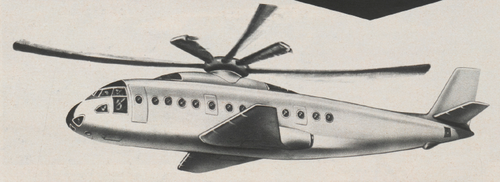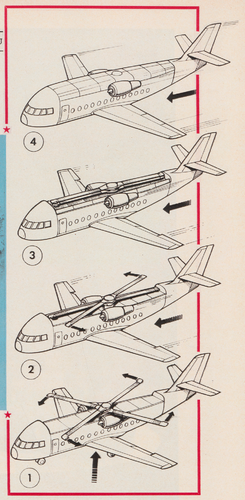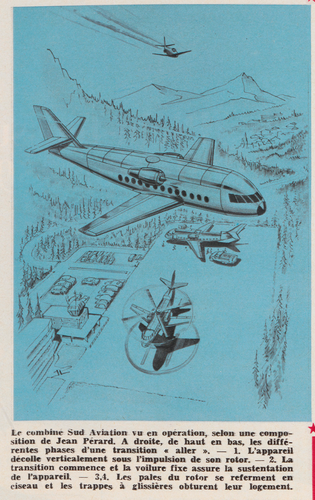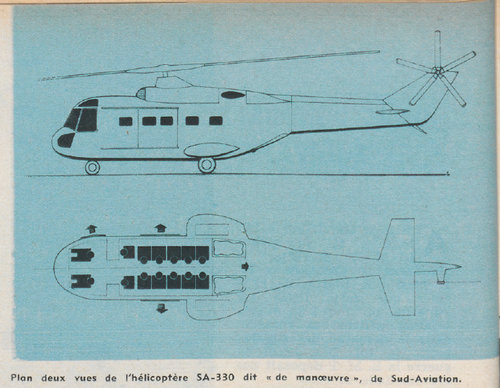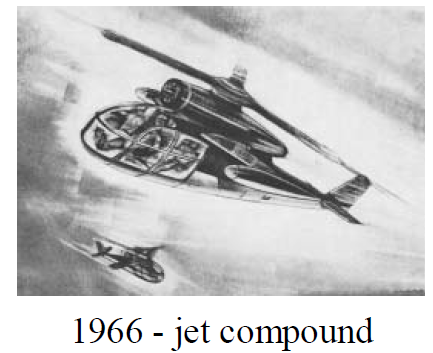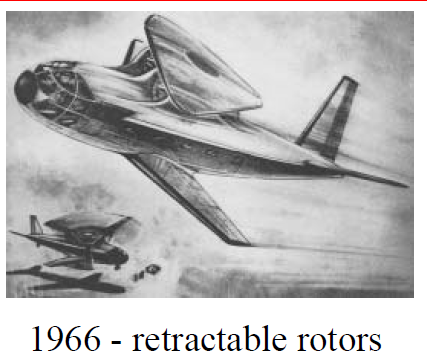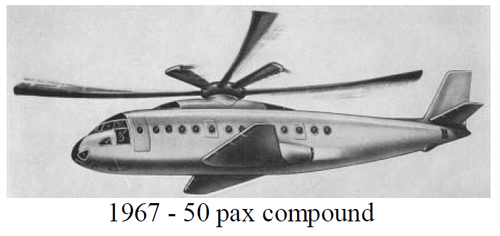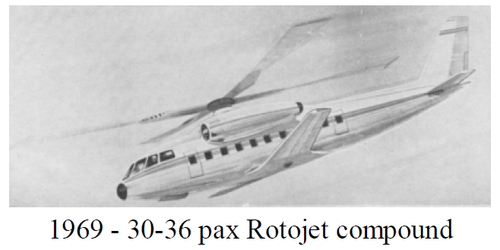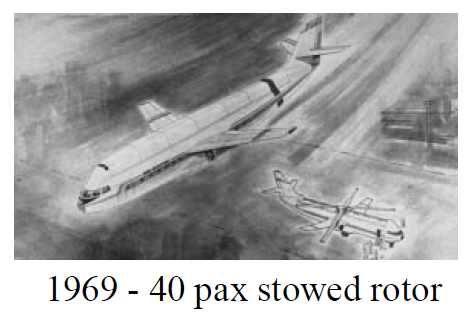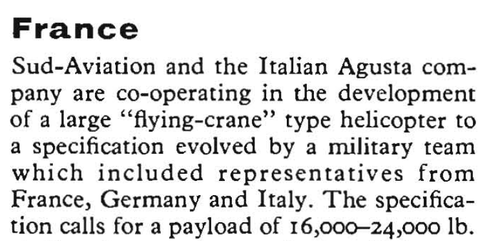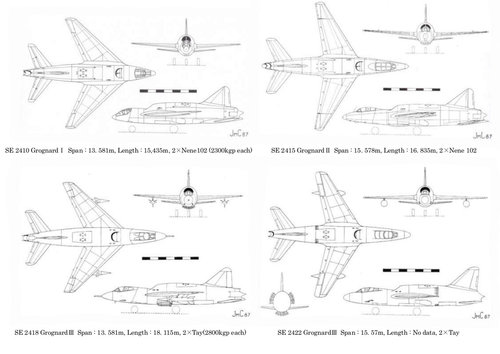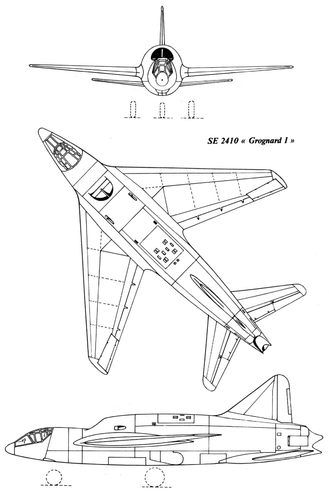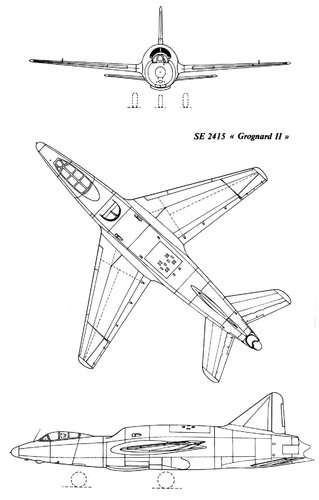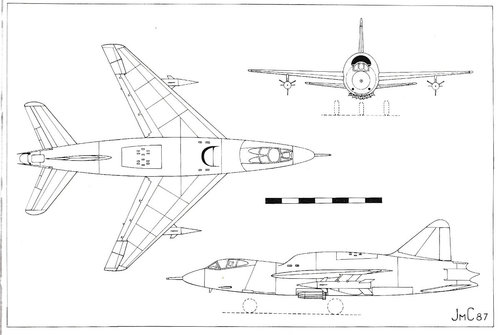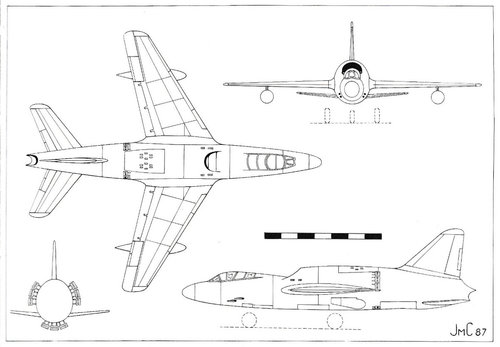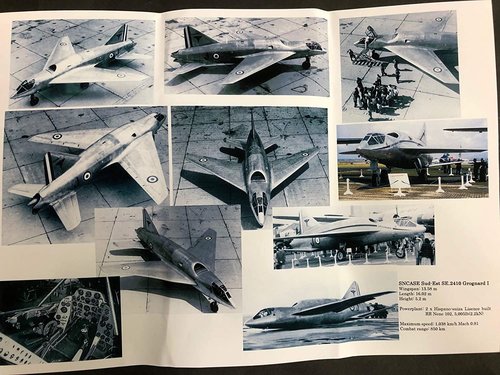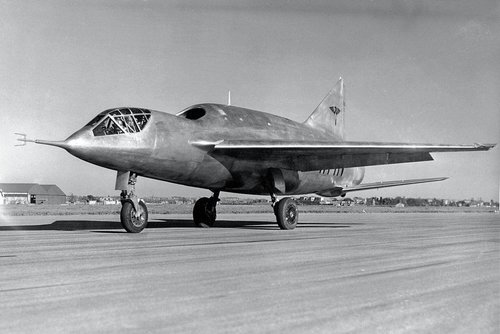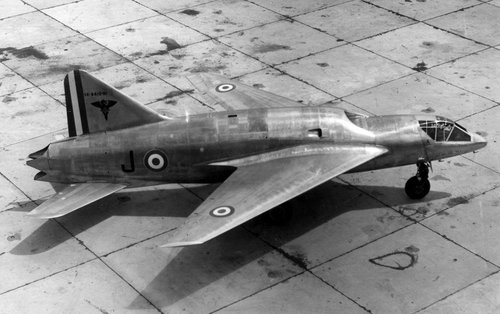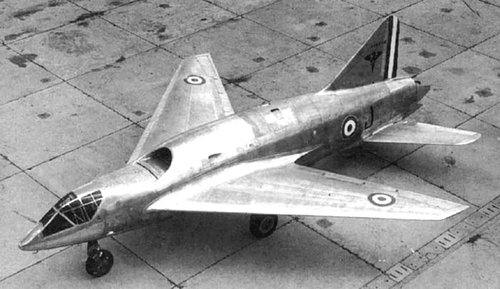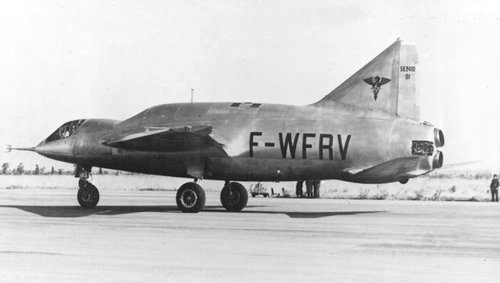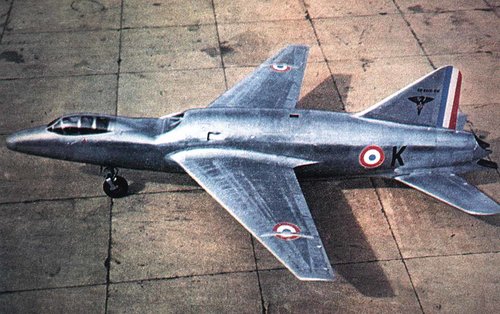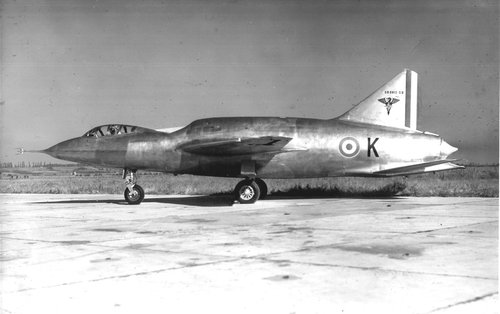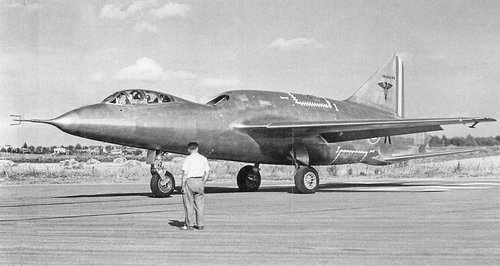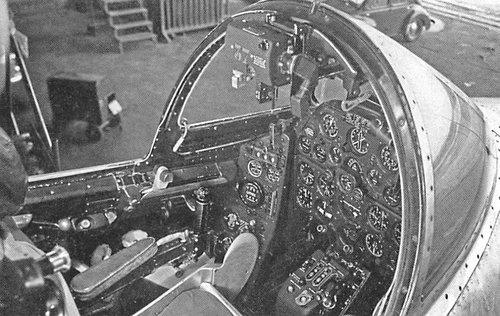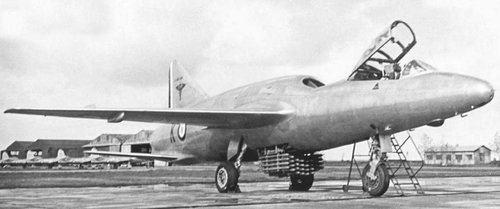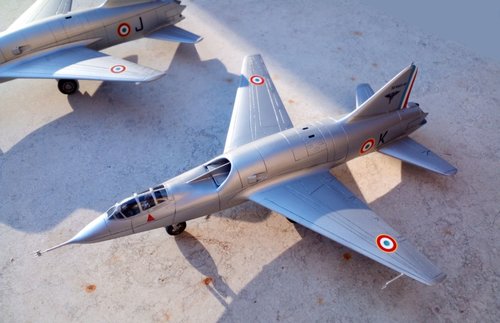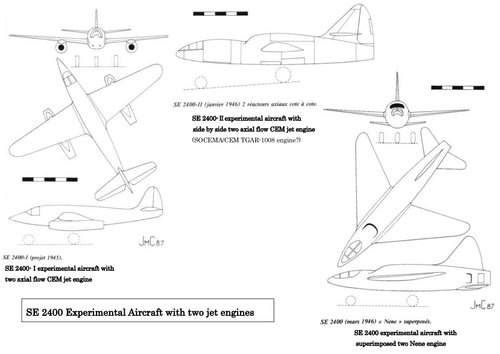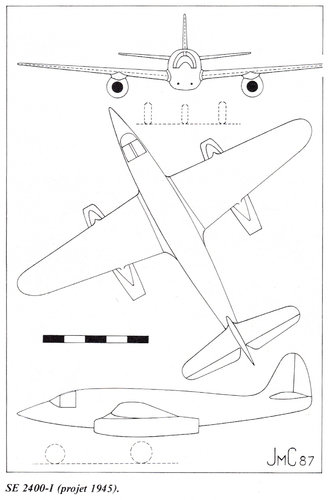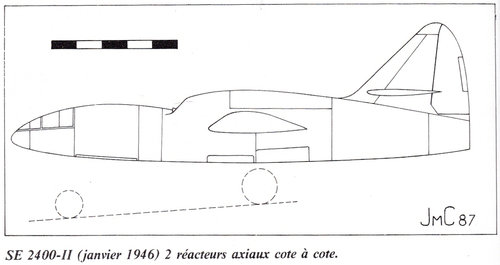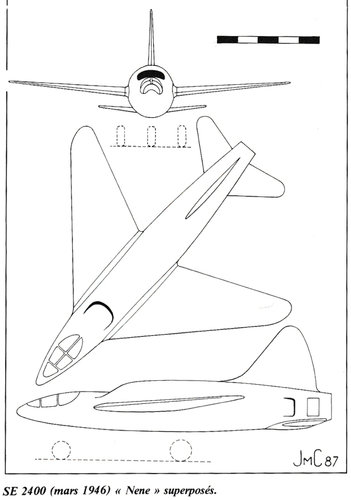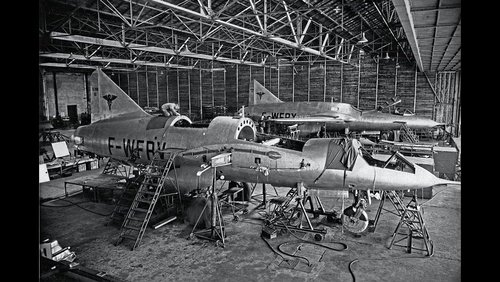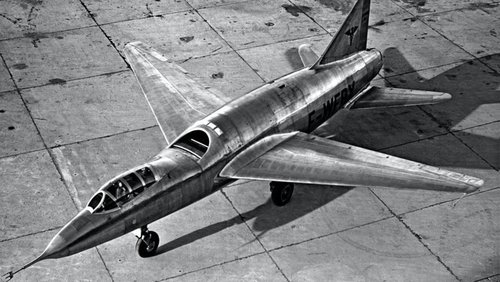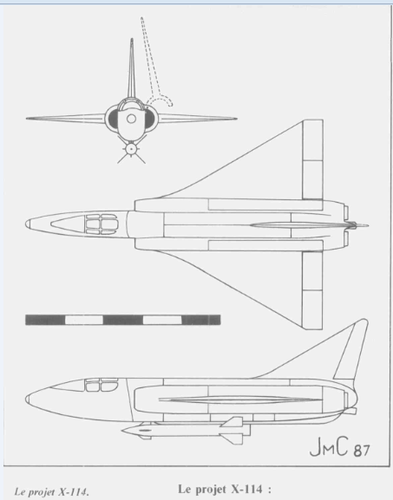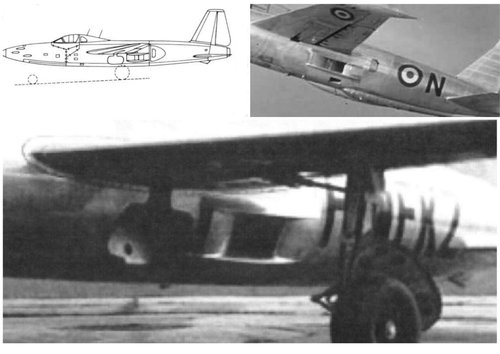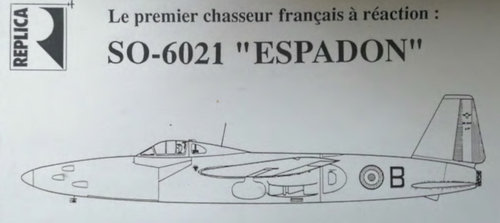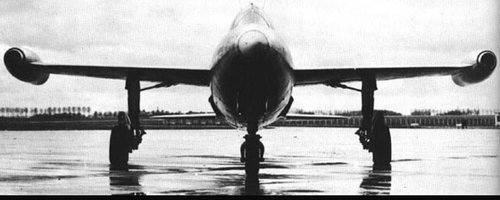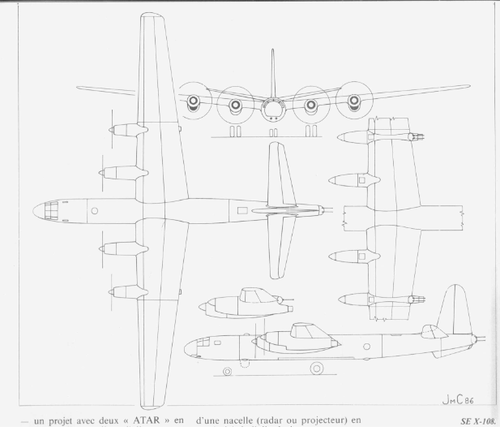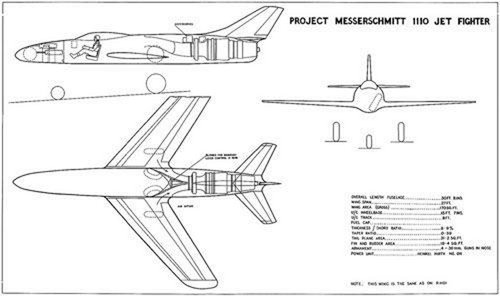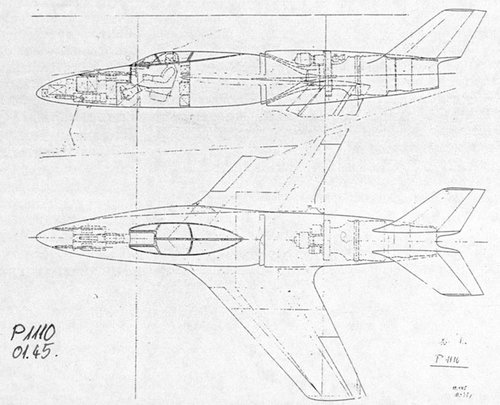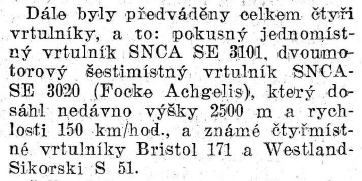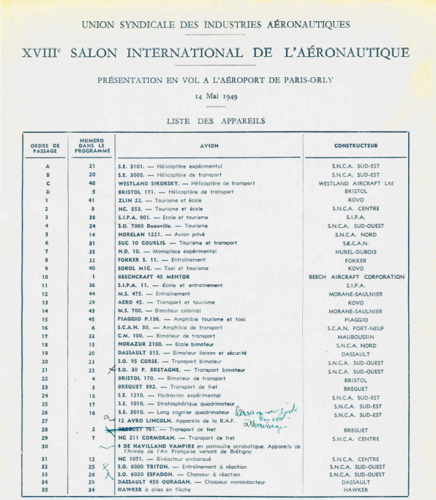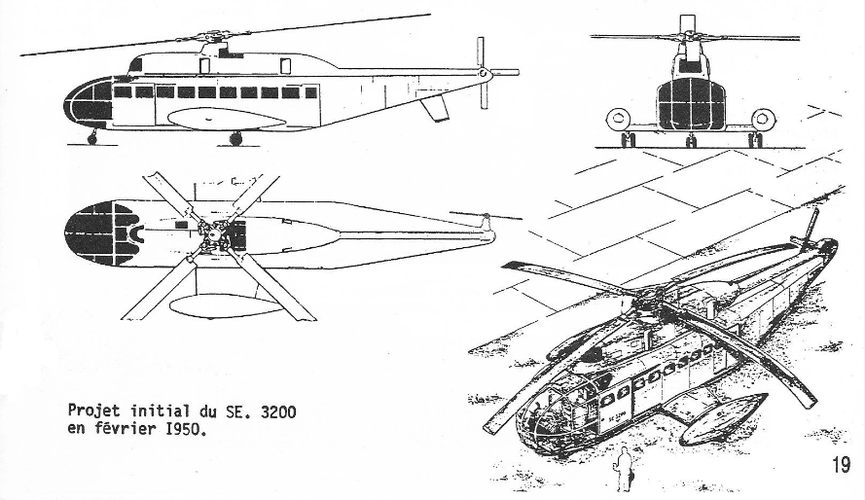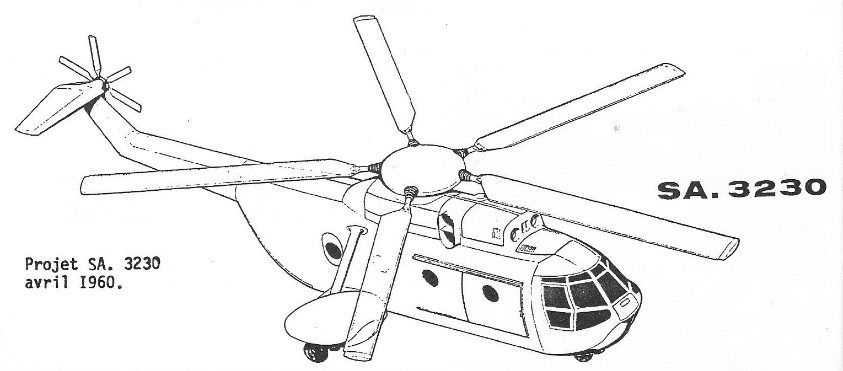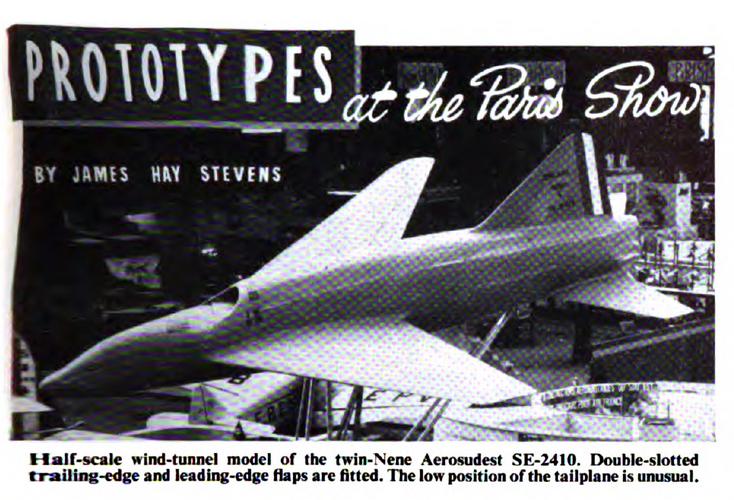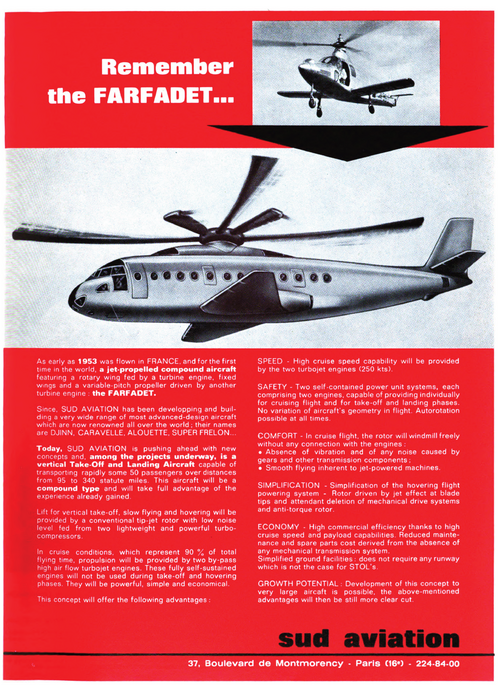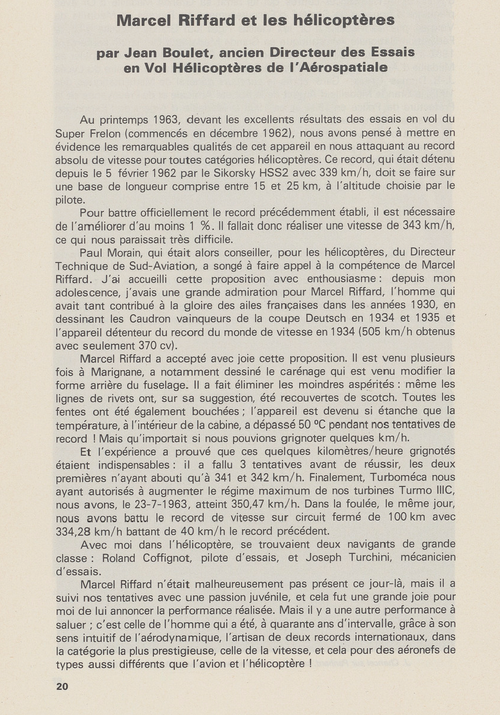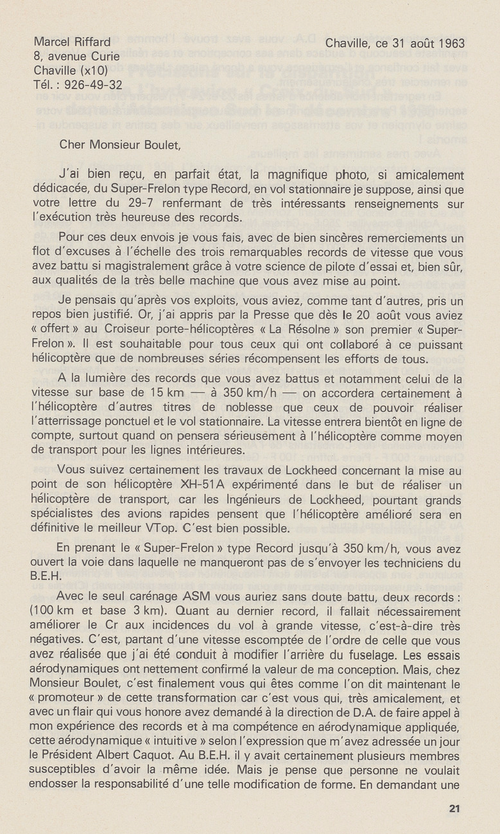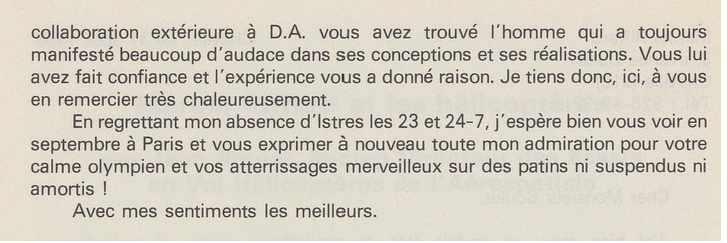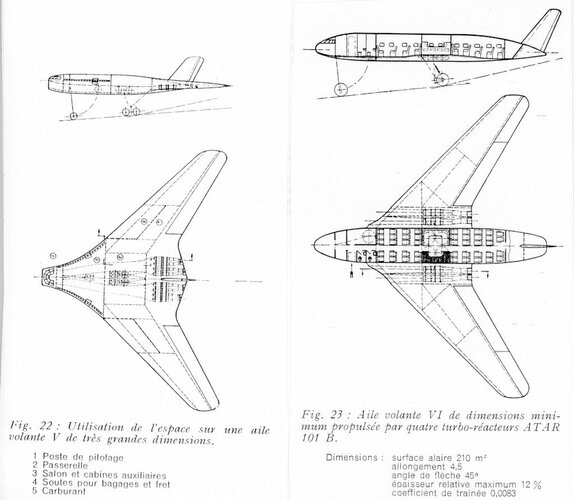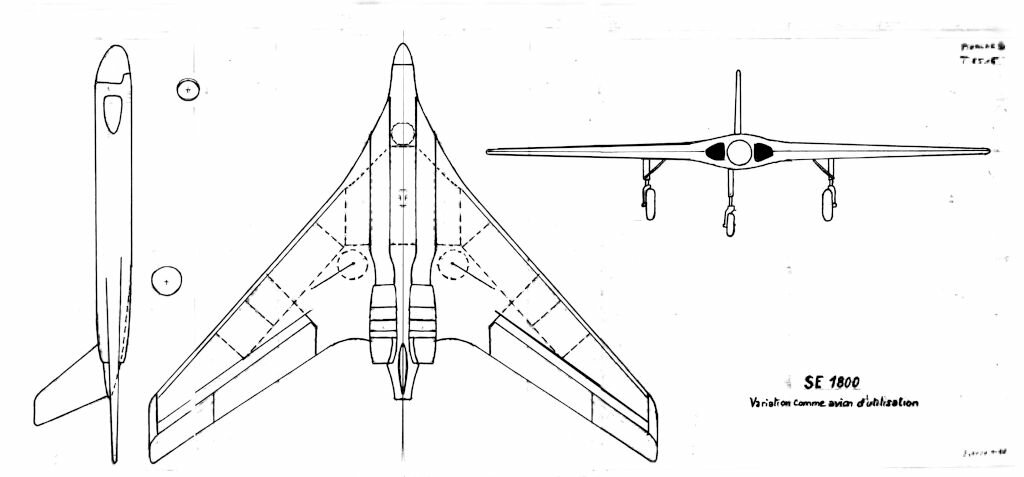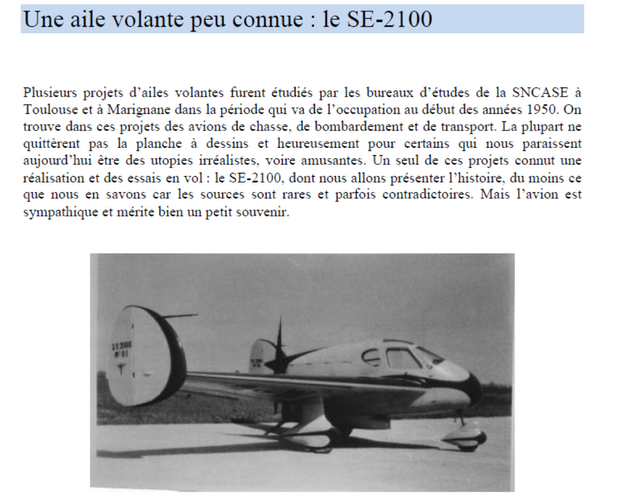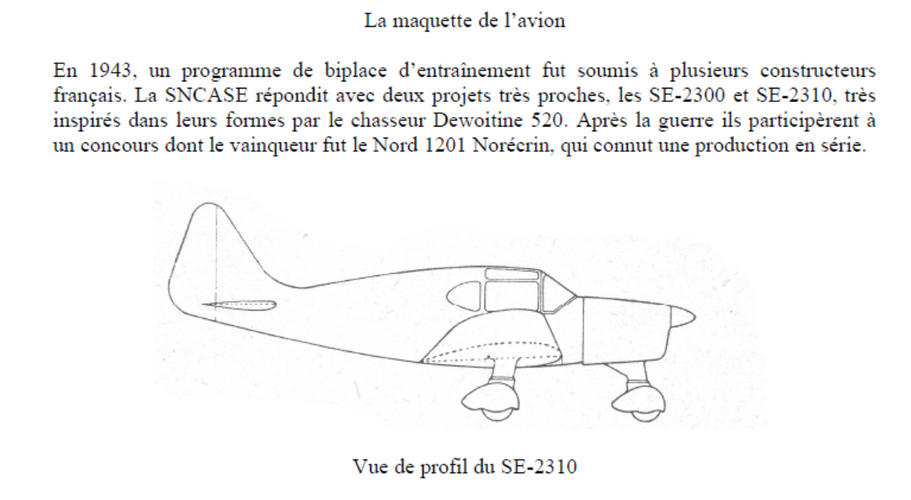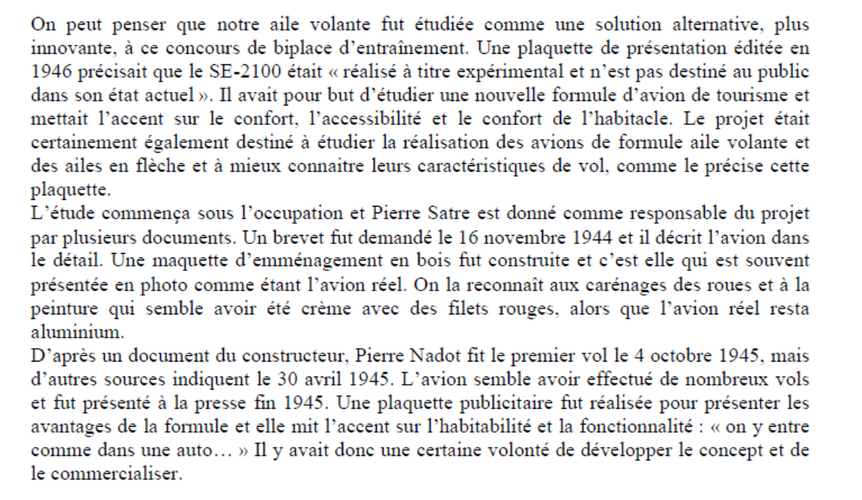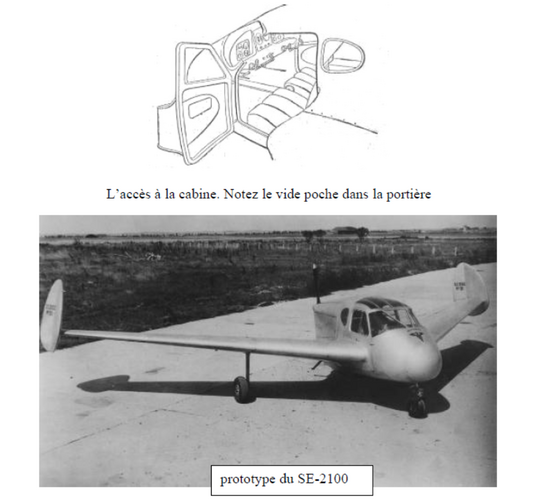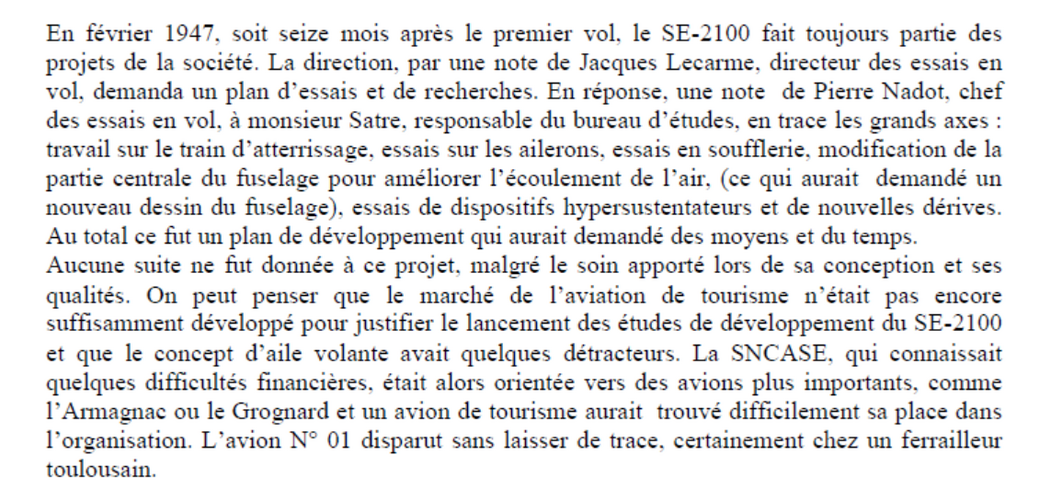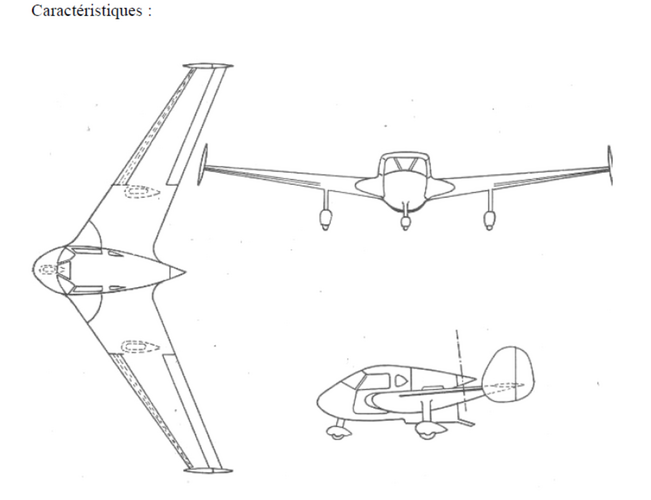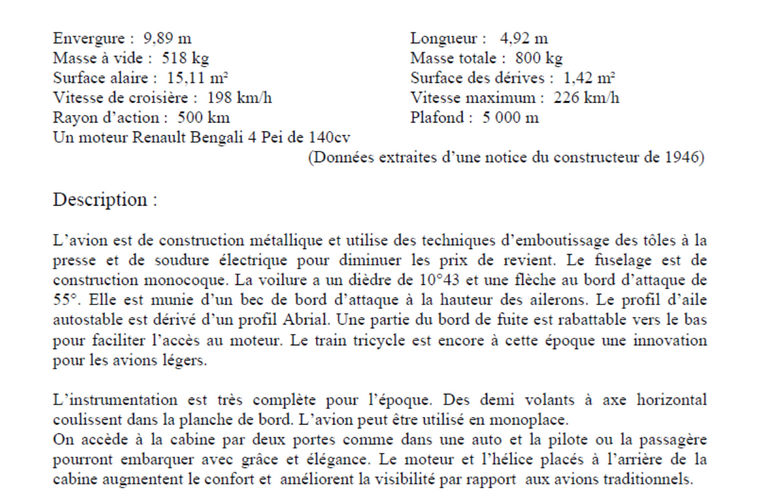You are using an out of date browser. It may not display this or other websites correctly.
You should upgrade or use an alternative browser.
You should upgrade or use an alternative browser.
SNCASE (Sud-Est Aviation) Projects
- Thread starter hesham
- Start date
Deltafan
ACCESS: Top Secret
- Joined
- 8 May 2006
- Messages
- 1,694
- Reaction score
- 2,294
It was a typography mistake or the foreseen name of the 2415 was, at first, 2412. But, finally, the second prototype of the "Grognard" (the subject of the article) was named 2415, not 2412.hesham said:From Ailes 10/1950,
it's the first time to hear about SNACSE SE.2412 ?.
Deltafan
ACCESS: Top Secret
- Joined
- 8 May 2006
- Messages
- 1,694
- Reaction score
- 2,294
At the beginning of the article, it's wrote, in French, that the 2412 was the second version of the 2410... And not of another plane, whatever it is ..
And the article is from 10.1950 and the SE.2415 made its first flight on 14.02.1951 with Pierre Nadot as pilot.
Next tests in Toulouse of SE.2412, second modified version of SE.2410, equipped, like the precedent, with two Nene turbojet engines built by Hispano-Suiza. It is Nadot who will test this aircraft, likely to be a very modern light bomber
And the article is from 10.1950 and the SE.2415 made its first flight on 14.02.1951 with Pierre Nadot as pilot.
- Joined
- 26 May 2006
- Messages
- 34,781
- Reaction score
- 15,660
- Joined
- 26 May 2006
- Messages
- 34,781
- Reaction score
- 15,660
- Joined
- 26 May 2006
- Messages
- 34,781
- Reaction score
- 15,660
From Air Pictorial September 1959,
I spoke about it before,it was a large flaying crane helicopter Project,with a payload 16.000-24.000 1b,and designed
in co-operated with Agusta and a company from Germany, in 1959,and I suggested before the Germany company
maybe was Meckle or Borgward ?.
I spoke about it before,it was a large flaying crane helicopter Project,with a payload 16.000-24.000 1b,and designed
in co-operated with Agusta and a company from Germany, in 1959,and I suggested before the Germany company
maybe was Meckle or Borgward ?.
Attachments
blackkite
Don't laugh, don't cry, don't even curse, but.....
- Joined
- 31 May 2007
- Messages
- 8,805
- Reaction score
- 7,668
Hi!
The SNCASE SE2410 Grognard was designed as a single-seater, low-level ground attack aircraft. The French Army Air Corps is under development in the 1950s, but the program was discontinued due to Sud-Ouest Vautour II.
SE.2410 Grognard IOriginal specifications; one prototype.
SE.2415 Grognard IIRevised two-seat design with changes to wing, fuselage and cockpit; one prototype.
SE.2418 GrognardUnbuilt production single-seat version with Rolls-Royce Tays replacing the Nene engines in the prototypes.
http://www.airwar.ru/image/idop/attack/se2415/
https://forum.warthunder.com/index.php?/topic/388061-sncase-sud-est-2410-and-2415-grognard/
Sources :
LES AVIONS DE COMBAT FRANCAIS 1944-1960Ⅱ-CHASSE LOURDE, BOMBARDMENT, ASSAUT, EXPLORATION, Jean CUNY Introduction du Genaral Pierre M.GALLOIS,
DOCAVIA EDITIONS LARIVIERE 30
The SNCASE SE2410 Grognard was designed as a single-seater, low-level ground attack aircraft. The French Army Air Corps is under development in the 1950s, but the program was discontinued due to Sud-Ouest Vautour II.
SE.2410 Grognard IOriginal specifications; one prototype.
SE.2415 Grognard IIRevised two-seat design with changes to wing, fuselage and cockpit; one prototype.
SE.2418 GrognardUnbuilt production single-seat version with Rolls-Royce Tays replacing the Nene engines in the prototypes.
http://www.airwar.ru/image/idop/attack/se2415/
https://forum.warthunder.com/index.php?/topic/388061-sncase-sud-est-2410-and-2415-grognard/
Sources :
LES AVIONS DE COMBAT FRANCAIS 1944-1960Ⅱ-CHASSE LOURDE, BOMBARDMENT, ASSAUT, EXPLORATION, Jean CUNY Introduction du Genaral Pierre M.GALLOIS,
DOCAVIA EDITIONS LARIVIERE 30
Attachments
Last edited:
blackkite
Don't laugh, don't cry, don't even curse, but.....
- Joined
- 31 May 2007
- Messages
- 8,805
- Reaction score
- 7,668
Hi SE 2410 pictures.
Attachments
Last edited:
blackkite
Don't laugh, don't cry, don't even curse, but.....
- Joined
- 31 May 2007
- Messages
- 8,805
- Reaction score
- 7,668
Hi! SE 2415 pictures. Rounded nose and pointed nose.
Can you see air intake fence in the second picture?
http://fighters.forumactif.com/t889...0-se-2415-grognard-kits-dujin-replica-au-1-72
Can you see air intake fence in the second picture?
http://fighters.forumactif.com/t889...0-se-2415-grognard-kits-dujin-replica-au-1-72
Attachments
Last edited:
blackkite
Don't laugh, don't cry, don't even curse, but.....
- Joined
- 31 May 2007
- Messages
- 8,805
- Reaction score
- 7,668
Hi!

 www.fliegerweb.com
Specifications: Sud-Est SE. 2410 Grognard, SE. 2415 Grognard II (SE.2415 data corresponding in brackets)
www.fliegerweb.com
Specifications: Sud-Est SE. 2410 Grognard, SE. 2415 Grognard II (SE.2415 data corresponding in brackets)
Usage: Low-attack aircraft
Engine: two Rolls Royce RB.41 Nene with single-stage radial compressor and 9 combustion chambers
Stand thrust: 2,262 kp (22.2 kN)
Continuous power: 1,820 kp (17.84 kN) in 8,000 m
First flight Sud-Est SE. 2410: April 30, 1950
First flight SE. 2415: February 14, 1951
Built: 1949 (1951)
Crew: 1 man (2 men)
Dimensions:
Wingspan: 13.58 m (13.58 m), Length: 15.44 m (16.84 m), Hight : 5.70 m (5.20 m)
largest wing chord: 4.95 m (3.60 m), largest wing thickness: 0.58 m (0.48 m)
largest hull height: 2.72 m (2.68m), largest hull width: 2.23 m (2.02m)
Wingspan side tail: 6.98 m (6.00 m), Track gauge: 3.08 m (2.70 m), Wheelbase: 5.35 m (4.60 m)
Wing area: 46.14 m2 (44.23 m2), Sweep back angle of wing front edge: 47° (32°), Tail: 35° (37°)
Empty mass: 11,117 kg (11,512 kg), Starting mass normal: 15,820 kg (17,050 kg), Maximum take-off mass: 17,060 kg (18,160 kg)
Tank capacity: 2,400 litres (2,600 litres), Area load: 369.74 kg/m2 (410.58 m2), Power load: 3.41 kg/hp (4.64 kg/kW)
Services:
Top speed near the ground: 1,038 km/h (960 km/h), Top speed in 8,000 m: 1060 km/h (982 km/h)
Cruising speed in 8,000 m: 880 km/h (880 km/h), Take off speed: 240 km/h (220 km/h), Landing speed: 180 km/h (180 km/h)
Ceiling: 9,600 m (9,000m)
Climbing rate: 47.8 m/s (44 m/s), Climbing time at 1,000 m: 22 sec (25 sec), Climbing time at 8,000 m: 4.0 min (4.5 min)
Range normal: 1.450 km (1,580 km), Maximum range: 1,720 km (1,880 km), Flight duration: 2 h (2.25 h)
Take off run: 920 m
Armament: two 30 mm defA 552 machine guns with 100 rounds each
32 unguided 2 inch matra missiles and four steerable air-to-air missiles Matra T10
Bomb load: max. 1000 kg

SNCASE Sud-Est SE. 2410 Grognard
Die SNCASE Sud-Est SE. 2410 Grognard und SE. 2415 Grognard II waren französische Kampfflugzeuge mit Strahlantrieb. Die beiden Maschinen wurde kurz nach dem Zweiten Weltkrieg entwickelt und konnten sich am Markt gegen seine Konkurrenten nicht durchsetzen. Die Grognard blieb ein Prototyp.
Usage: Low-attack aircraft
Engine: two Rolls Royce RB.41 Nene with single-stage radial compressor and 9 combustion chambers
Stand thrust: 2,262 kp (22.2 kN)
Continuous power: 1,820 kp (17.84 kN) in 8,000 m
First flight Sud-Est SE. 2410: April 30, 1950
First flight SE. 2415: February 14, 1951
Built: 1949 (1951)
Crew: 1 man (2 men)
Dimensions:
Wingspan: 13.58 m (13.58 m), Length: 15.44 m (16.84 m), Hight : 5.70 m (5.20 m)
largest wing chord: 4.95 m (3.60 m), largest wing thickness: 0.58 m (0.48 m)
largest hull height: 2.72 m (2.68m), largest hull width: 2.23 m (2.02m)
Wingspan side tail: 6.98 m (6.00 m), Track gauge: 3.08 m (2.70 m), Wheelbase: 5.35 m (4.60 m)
Wing area: 46.14 m2 (44.23 m2), Sweep back angle of wing front edge: 47° (32°), Tail: 35° (37°)
Empty mass: 11,117 kg (11,512 kg), Starting mass normal: 15,820 kg (17,050 kg), Maximum take-off mass: 17,060 kg (18,160 kg)
Tank capacity: 2,400 litres (2,600 litres), Area load: 369.74 kg/m2 (410.58 m2), Power load: 3.41 kg/hp (4.64 kg/kW)
Services:
Top speed near the ground: 1,038 km/h (960 km/h), Top speed in 8,000 m: 1060 km/h (982 km/h)
Cruising speed in 8,000 m: 880 km/h (880 km/h), Take off speed: 240 km/h (220 km/h), Landing speed: 180 km/h (180 km/h)
Ceiling: 9,600 m (9,000m)
Climbing rate: 47.8 m/s (44 m/s), Climbing time at 1,000 m: 22 sec (25 sec), Climbing time at 8,000 m: 4.0 min (4.5 min)
Range normal: 1.450 km (1,580 km), Maximum range: 1,720 km (1,880 km), Flight duration: 2 h (2.25 h)
Take off run: 920 m
Armament: two 30 mm defA 552 machine guns with 100 rounds each
32 unguided 2 inch matra missiles and four steerable air-to-air missiles Matra T10
Bomb load: max. 1000 kg
Last edited:
blackkite
Don't laugh, don't cry, don't even curse, but.....
- Joined
- 31 May 2007
- Messages
- 8,805
- Reaction score
- 7,668
Hi! SE2400 exparimental aircraft projects with twin jet engines. SE2410 ancestor?
Sources :
LES AVIONS DE COMBAT FRANCAIS 1944-1960Ⅱ-CHASSE LOURDE, BOMBARDMENT, ASSAUT, EXPLORATION, Jean CUNY Introduction du Genaral Pierre M.GALLOIS,
DOCAVIA EDITIONS LARIVIERE 30
Sources :
LES AVIONS DE COMBAT FRANCAIS 1944-1960Ⅱ-CHASSE LOURDE, BOMBARDMENT, ASSAUT, EXPLORATION, Jean CUNY Introduction du Genaral Pierre M.GALLOIS,
DOCAVIA EDITIONS LARIVIERE 30
Attachments
blackkite
Don't laugh, don't cry, don't even curse, but.....
- Joined
- 31 May 2007
- Messages
- 8,805
- Reaction score
- 7,668
Hi! Construction of SE2410/SE2415 nd SE2415.
https://www.flugrevue.de/klassiker/aufholjagd-sud-est-grognard/#bildergalerie
https://www.flugrevue.de/klassiker/aufholjagd-sud-est-grognard/#bildergalerie
Attachments
blackkite
Don't laugh, don't cry, don't even curse, but.....
- Joined
- 31 May 2007
- Messages
- 8,805
- Reaction score
- 7,668
Flying wing!!SE.1800
- Joined
- 26 May 2006
- Messages
- 34,781
- Reaction score
- 15,660
SNCASE SE-X-114 :was single seat delta wing interceptor project
of 1953,powered by two turbojet engines.
From ; Les Avions de Combat Francais.
Attachments
blackkite
Don't laugh, don't cry, don't even curse, but.....
- Joined
- 31 May 2007
- Messages
- 8,805
- Reaction score
- 7,668
Oh boundary layer suction air intake!!
Thanks a lot Justo-san.
I think that this air intake had a fence that separates the boundary layer from the laminar flow.
The inhaled boundary layer may be discharged from somewhere, or accelerated by the ejector effect of the laminar intake air, mixed, and supplied to the engine.
To me, it looks like there is a baffle fence at the air intake that takes in laminar air.
Thanks a lot Justo-san.
I think that this air intake had a fence that separates the boundary layer from the laminar flow.
The inhaled boundary layer may be discharged from somewhere, or accelerated by the ejector effect of the laminar intake air, mixed, and supplied to the engine.
To me, it looks like there is a baffle fence at the air intake that takes in laminar air.
Attachments
Last edited:
- Joined
- 27 December 2005
- Messages
- 17,701
- Reaction score
- 26,079
I'm not happy with this huge dump of scans with precious little in the way of sources being mentioned here from the usual suspects. There are poor scans, scans of pictures of models of dubious authenticity... Take some time to label your pictures, crop the scans, and generally be fair to the original sources.
I can see a lot of scans from Les Avions de Combat Francais in a short time frame here, I'm not sure this is ethically justified.
I can see a lot of scans from Les Avions de Combat Francais in a short time frame here, I'm not sure this is ethically justified.
Some unavailable sources, posts deleted.
Sorry
Sorry
blackkite
Don't laugh, don't cry, don't even curse, but.....
- Joined
- 31 May 2007
- Messages
- 8,805
- Reaction score
- 7,668
Messerschmitt P1110 design was as follows.
"The boundary layer, running along the length of the fuselage nose, is sucked by a compressor attached to the engine via at least two, and maybe several, slots in the bent intake. "
SECRET MESSERSCHMITT PROJECTS, Willy Radinger & Walter Schick, A SCHIFFER MILITARY HISTORY BOOK.
Thanks a lot as usual Justo-san.
https://erenow.net/ww/the-race-for-hitlers-x-planes/11.php
https://www.oocities.org/asymmetrics/me1110.htm
"The boundary layer, running along the length of the fuselage nose, is sucked by a compressor attached to the engine via at least two, and maybe several, slots in the bent intake. "
SECRET MESSERSCHMITT PROJECTS, Willy Radinger & Walter Schick, A SCHIFFER MILITARY HISTORY BOOK.
Thanks a lot as usual Justo-san.
https://erenow.net/ww/the-race-for-hitlers-x-planes/11.php
https://www.oocities.org/asymmetrics/me1110.htm
Attachments
Last edited:
- Joined
- 26 May 2006
- Messages
- 34,781
- Reaction score
- 15,660
From L+K 1949/16,
here is a strange designation,SNCASE SE-3020 ;
In addition, a total of four helicopters were demonstrated, namely: SNCA SE 3101 experimental single-seater helicopter SNCASE 3020 twin-engine six-seater
helicopter (Focke Achgelis), which recently reached an altitude of 2500 m and a speed of 150 km / h, and the well-known Bristol 171 and Westland-Sikorski
S 51 four-seater helicopters .
here is a strange designation,SNCASE SE-3020 ;
In addition, a total of four helicopters were demonstrated, namely: SNCA SE 3101 experimental single-seater helicopter SNCASE 3020 twin-engine six-seater
helicopter (Focke Achgelis), which recently reached an altitude of 2500 m and a speed of 150 km / h, and the well-known Bristol 171 and Westland-Sikorski
S 51 four-seater helicopters .
Attachments
Deltafan
ACCESS: Top Secret
- Joined
- 8 May 2006
- Messages
- 1,694
- Reaction score
- 2,294
I guess that it's a typo.From L+K 1949/16,
here is a strange designation,SNCASE SE-3020 ;
In addition, a total of four helicopters were demonstrated, namely: SNCA SE 3101 experimental single-seater helicopter SNCASE 3020 twin-engine six-seater
helicopter (Focke Achgelis), which recently reached an altitude of 2500 m and a speed of 150 km / h, and the well-known Bristol 171 and Westland-Sikorski
S 51 four-seater helicopters .
SNCASE SE-3000 twin engine helicopter, a captured german prototype of the Focke Achgelis Fa-223, was part of the Orly Air Show on 14.05.1949.
Deltafan
ACCESS: Top Secret
- Joined
- 8 May 2006
- Messages
- 1,694
- Reaction score
- 2,294
Your article is from L+K 16/49 and says that there was a total of four helicopters that were demonstrated, namely: SNCA SE 3101 experimental single-seater helicopter SNCASE 3020 twin-engine six-seater helicopter (Focke Achgelis), which recently reached an altitude of 2500 m and a speed of 150 km / h, and the well-known Bristol 171 and Westland-Sikorski
S 51 four-seater helicopters.
From Gaumont Pathé archives :
the list of the aircraft that were demonstrated in Orly on 14.05.1949, where there were only four helicopters (at the beginning of the list) : SNCASE SE 3101, SNCASE SE 3000, Bristol 171 and a Westland Sikorsky helicopter.
S 51 four-seater helicopters.
From Gaumont Pathé archives :
the list of the aircraft that were demonstrated in Orly on 14.05.1949, where there were only four helicopters (at the beginning of the list) : SNCASE SE 3101, SNCASE SE 3000, Bristol 171 and a Westland Sikorsky helicopter.
Attachments
- Joined
- 9 October 2009
- Messages
- 21,927
- Reaction score
- 13,525

Sud-Est SE-3110: More is less, sometimes.
This lovely two-seat experimental French helicopter of the early 1950s was characterised by its unusual pair of angled tail rotors. Curiously, Sikorsky tried something similar with its original VS-…
- Joined
- 26 May 2006
- Messages
- 34,781
- Reaction score
- 15,660
From TU 153.From Le Fana 312,
the SNCASE SA.3220 and SA.3230 was a developed Projects from SA.3210
Super Frelon helicopter,if someone has a drawings to them ?.
Attachments
- Joined
- 11 March 2012
- Messages
- 3,244
- Reaction score
- 3,170
The first Frelon looked like a up-sized Allouette 3 of which only two were built. Then they hired some Sikorsky engineers who completely re-designed the Super Frelon more along the lines of a Sikorsky S-61R of CH-53. These served with the French, Israeli and South African militaries while they licensed production to Communist China.From TU 153.From Le Fana 312,
the SNCASE SA.3220 and SA.3230 was a developed Projects from SA.3210
Super Frelon helicopter,if someone has a drawings to them ?.
- Joined
- 26 May 2006
- Messages
- 34,781
- Reaction score
- 15,660
From Pioniers 1982,please read this,
Marcel Riffard and helicopters
by Jean Boulet, former Test Director
in Flight Aerospace Helicopters
In the spring of 1963, given the excellent results of the Super Frelon flight tests (begun in December 1962), we thought of implementing
highlight the remarkable qualities of this aircraft by tackling the absolute speed record for all helicopter categories. This record, which was held
since February 5, 1962 by the Sikorsky HSS2 with 339 km/h, must be done on a length basis of between 15 and 25 km, at the altitude chosen by the pilot.
To officially beat the previously established record, it is necessary to improve it by at least 1%. It was therefore necessary to achieve a speed of 343 km/h,
which seemed very difficult to us.
Paul Morain, who was then advisor, for helicopters, to the Technical Director of Sud-Aviation, thought of calling on the skills of Marcel
Riffard. I welcomed this proposal with enthusiasm: since my
adolescence, I had great admiration for Marcel Riffard, the man who had contributed so much to the glory of the French wings in the 1930s, in
designing the Caudron winners of the Deutsch Cup in 1934 and 1935 and
the device that held the world speed record in 1934 (505 km/h obtained
with only 370 hp).
Marcel Riffard happily accepted this proposal. He came to Marignane several times, notably designed the fairing which modified the
rear shape of the fuselage. He had the slightest rough edges removed: even the
rivet lines were, at his suggestion, covered with tape. All the slots have also been blocked; the device has become so waterproof that the
The temperature inside the cabin exceeded 50°C during our record attempts! But what did it matter if we could eat a few km/h?
And experience has proven that these few kilometers/hour nibbled away
were essential: it took 3 attempts to succeed, the first two only achieving 341 and 342 km/h. Finally, Turboméca
having authorized to increase the maximum speed of our Turmo IIIC turbines,
On 7/23/1963, we reached 350.47 km/h. Immediately, on the same day,
we broke the speed record on a 100 km closed circuit with 334.28 km/h beating the previous record by 40 km/h.
With me in the helicopter were two high-class pilots: Roland Coffignot, test pilot, and Joseph Turchini, mechanic.
of tests.
Marcel Riffard was unfortunately not present that day, but he followed our attempts with youthful passion, and it was a great joy for
me to announce to him the performance achieved. But there is another performance to
greet ; it is that of the man who was, forty years apart, thanks to his intuitive sense of aerodynamics, the architect of two international records, in the most prestigious category, that of speed, and this for aircraft
types as different as the plane and the helicopter!.
Dear Mr. Boulet,
I have received, in perfect condition, the magnificent photo, so kindly autographed, of the Super-Frelon type Record, in hover I suppose, as well as
your letter of 29-7 containing very interesting information on the very successful execution of the records.
For these two sendings I send you, with very sincere thanks, a flood of apologies on the scale of the three remarkable speed records that you
have beaten so masterfully thanks to your science as a test pilot and, of course, to the qualities of the very beautiful machine that you have developed.
I thought that after your exploits, you, like so many others, had taken a well-deserved rest. However, I learned from the Press that as of August 20 you had
“offered” to the helicopter carrier cruiser “La Résolne” its first “Super-Frelon”. It is desirable for all those who collaborated in this powerful
helicopter that many series reward everyone's efforts.
In light of the records that you have broken and in particular that of the
speed based on 15 km - at 350 km/h - we will certainly grant the helicopter other titles of nobility than those of being able to achieve punctual landing and hovering flight. Speed will soon come into play, especially when we seriously think about the helicopter as a means
transport for internal lines.
You are certainly following Lockheed's work on the development of its experienced XH-51A helicopter with the aim of achieving a
transport helicopter, because Lockheed engineers, although great specialists in fast aircraft, believe that the improved helicopter will be in
definitively the best VTop. It's possible.
By taking the "Super-Frelon" type Record up to 350 km/h, you have opened the path in which the technicians of the
B.E.H.
With the ASM fairing alone you would undoubtedly have broken two records: (100 km and 3 km base). As for the last record, it was necessary to improve the Cr at the incidence of high-speed flight, that is to say very
negative. This is, starting from an expected speed of the order of that which you
realized that I had to modify the rear of the fuselage. Attempts
aerodynamics clearly confirmed the value of my design. But, at Monsieur Boulet, it is ultimately you who are, as we now say, the “promoter” of this transformation because it is you who, very friendly, and with a flair that honors you, asked the management of D.A. to call on
my experience of records and my skills in applied aerodynamics, this “intuitive” aerodynamics according to the expression that President Albert Caquot addressed to me one day. At the B.E.H. there were certainly several members who might have the same idea. But I don't think anyone wanted
accept responsibility for any such formal modification. By asking for external collaboration from D.A. you found the man who has always shown great audacity in his designs and his achievements. You trusted him and experience proved you right. I would therefore like to thank you very warmly here.
Regretting my absence from Istres on 23 and 24-7, I hope to see you in September in Paris and once again express to you all my admiration for your
Olympian calm and your wonderful landings on skates that are neither suspended nor cushioned!
With my best regards.
Marcel Riffard and helicopters
by Jean Boulet, former Test Director
in Flight Aerospace Helicopters
In the spring of 1963, given the excellent results of the Super Frelon flight tests (begun in December 1962), we thought of implementing
highlight the remarkable qualities of this aircraft by tackling the absolute speed record for all helicopter categories. This record, which was held
since February 5, 1962 by the Sikorsky HSS2 with 339 km/h, must be done on a length basis of between 15 and 25 km, at the altitude chosen by the pilot.
To officially beat the previously established record, it is necessary to improve it by at least 1%. It was therefore necessary to achieve a speed of 343 km/h,
which seemed very difficult to us.
Paul Morain, who was then advisor, for helicopters, to the Technical Director of Sud-Aviation, thought of calling on the skills of Marcel
Riffard. I welcomed this proposal with enthusiasm: since my
adolescence, I had great admiration for Marcel Riffard, the man who had contributed so much to the glory of the French wings in the 1930s, in
designing the Caudron winners of the Deutsch Cup in 1934 and 1935 and
the device that held the world speed record in 1934 (505 km/h obtained
with only 370 hp).
Marcel Riffard happily accepted this proposal. He came to Marignane several times, notably designed the fairing which modified the
rear shape of the fuselage. He had the slightest rough edges removed: even the
rivet lines were, at his suggestion, covered with tape. All the slots have also been blocked; the device has become so waterproof that the
The temperature inside the cabin exceeded 50°C during our record attempts! But what did it matter if we could eat a few km/h?
And experience has proven that these few kilometers/hour nibbled away
were essential: it took 3 attempts to succeed, the first two only achieving 341 and 342 km/h. Finally, Turboméca
having authorized to increase the maximum speed of our Turmo IIIC turbines,
On 7/23/1963, we reached 350.47 km/h. Immediately, on the same day,
we broke the speed record on a 100 km closed circuit with 334.28 km/h beating the previous record by 40 km/h.
With me in the helicopter were two high-class pilots: Roland Coffignot, test pilot, and Joseph Turchini, mechanic.
of tests.
Marcel Riffard was unfortunately not present that day, but he followed our attempts with youthful passion, and it was a great joy for
me to announce to him the performance achieved. But there is another performance to
greet ; it is that of the man who was, forty years apart, thanks to his intuitive sense of aerodynamics, the architect of two international records, in the most prestigious category, that of speed, and this for aircraft
types as different as the plane and the helicopter!.
Dear Mr. Boulet,
I have received, in perfect condition, the magnificent photo, so kindly autographed, of the Super-Frelon type Record, in hover I suppose, as well as
your letter of 29-7 containing very interesting information on the very successful execution of the records.
For these two sendings I send you, with very sincere thanks, a flood of apologies on the scale of the three remarkable speed records that you
have beaten so masterfully thanks to your science as a test pilot and, of course, to the qualities of the very beautiful machine that you have developed.
I thought that after your exploits, you, like so many others, had taken a well-deserved rest. However, I learned from the Press that as of August 20 you had
“offered” to the helicopter carrier cruiser “La Résolne” its first “Super-Frelon”. It is desirable for all those who collaborated in this powerful
helicopter that many series reward everyone's efforts.
In light of the records that you have broken and in particular that of the
speed based on 15 km - at 350 km/h - we will certainly grant the helicopter other titles of nobility than those of being able to achieve punctual landing and hovering flight. Speed will soon come into play, especially when we seriously think about the helicopter as a means
transport for internal lines.
You are certainly following Lockheed's work on the development of its experienced XH-51A helicopter with the aim of achieving a
transport helicopter, because Lockheed engineers, although great specialists in fast aircraft, believe that the improved helicopter will be in
definitively the best VTop. It's possible.
By taking the "Super-Frelon" type Record up to 350 km/h, you have opened the path in which the technicians of the
B.E.H.
With the ASM fairing alone you would undoubtedly have broken two records: (100 km and 3 km base). As for the last record, it was necessary to improve the Cr at the incidence of high-speed flight, that is to say very
negative. This is, starting from an expected speed of the order of that which you
realized that I had to modify the rear of the fuselage. Attempts
aerodynamics clearly confirmed the value of my design. But, at Monsieur Boulet, it is ultimately you who are, as we now say, the “promoter” of this transformation because it is you who, very friendly, and with a flair that honors you, asked the management of D.A. to call on
my experience of records and my skills in applied aerodynamics, this “intuitive” aerodynamics according to the expression that President Albert Caquot addressed to me one day. At the B.E.H. there were certainly several members who might have the same idea. But I don't think anyone wanted
accept responsibility for any such formal modification. By asking for external collaboration from D.A. you found the man who has always shown great audacity in his designs and his achievements. You trusted him and experience proved you right. I would therefore like to thank you very warmly here.
Regretting my absence from Istres on 23 and 24-7, I hope to see you in September in Paris and once again express to you all my admiration for your
Olympian calm and your wonderful landings on skates that are neither suspended nor cushioned!
With my best regards.
Attachments
- Joined
- 15 February 2024
- Messages
- 489
- Reaction score
- 1,285
Yes Justo and Blackkite! SE-1800/1801/1802 project family was designed by Heinrich Hertel (the father of Ju 322 Mammut) under the direction of Mr. Gross in Marignane during 1946-48 period. The first attached plan comes from my collection, the second one showing some SE-1800 variants comes from Hertel's publications in Interavia.Flying wing!!
Attachments
Last edited:
- Joined
- 26 May 2006
- Messages
- 34,781
- Reaction score
- 15,660
Similar threads
-
SNCASE (Sud-Est) SE.1200 helicopter project
- Started by hesham
- Replies: 3
-
-
SNCASE (Sud-Est) Postwar flying boat projects
- Started by Jemiba
- Replies: 68
-
-

